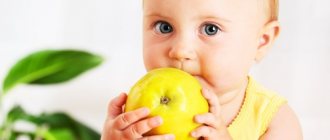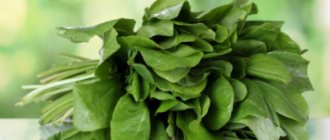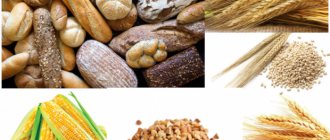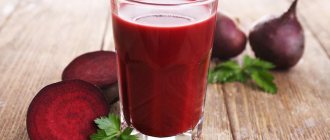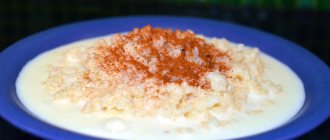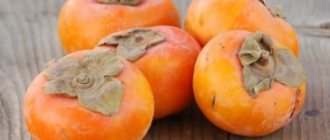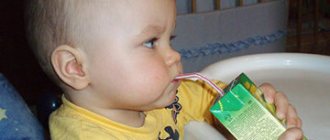Pros and cons of introducing juices into complementary foods
When a baby is born, mother’s milk serves as the source of all necessary substances. But over time, the question arises about additional sources, which can be juices for complementary feeding.
The beneficial properties for the baby’s body are as follows:
- High content of vitamins.
- Anti-inflammatory effect.
- Antibacterial action.
- Cleansing the child’s body of waste and toxins, which is a very important factor, since the environment currently leaves much to be desired.
But despite the huge amount of benefits, it can also have a negative impact:
- A side effect of administration may be the appearance of an allergic reaction . Perhaps it will not appear immediately, but after a few weeks. Then it is no longer possible to accurately determine the cause of the appearance. If your child has a rash, but you don’t know whether it is an allergic manifestation or symptoms of a disease, read this material.
- The difficult digestibility of this product can negatively affect the gastrointestinal tract, as it has an irritating effect. After some time, the baby may experience consequences such as gastrointestinal pathologies.
- The purchased product contains a lot of sugar, which has a bad effect even on an adult body.
- Fresh juices are too concentrated. It is worth diluting them with water when taking them.
- Introducing the product into a baby’s diet can contribute to the dilution of stool, dehydration of the body, and the rapid appearance of excess weight. What other causes of loose stool in a baby during breastfeeding can be found out here.
When can a baby be given juices?
You should not start feeding infants juice too early. Not earlier than six months after birth. This period is needed for those children who are breastfed.
Those babies who are not breastfed (on formula) can start complementary feeding at an earlier date. Already at 3-4 months.
Currently, the Institute of Nutrition of the Russian Academy of Medical Sciences has found that baby juices should be given no earlier than 4-5 months of life. Early addition of a variety of drinks may contribute to undesirable consequences. The volume should not exceed 5 ml to begin with.
How to make carrot juice for babies
Anyone can prepare a high-quality and balanced drink for a baby, but you should adhere to several preparation rules. First of all, you need to choose quality carrots. Today in supermarkets you can find an abundance of various carrots, but in most cases they are grown using all kinds of chemical protection products and artificial fertilizers.
To prepare a drink for your baby, it is best to buy homemade carrots or take one that you grew yourself. Vegetables should be chosen of medium size, without rot or other defects. The carrots need to be washed well and cleaned of any remaining tops and skin. If you take a large vegetable, be sure to peel it and remove the dense core. After the manipulations, the fruit must be soaked in cold water for 2 hours. This will help eliminate all kinds of toxins taken from the soil.
Important! Carrot juice can kill your baby's appetite, so it is best to give it after the main meal or between meals.
After this, the carrots should be passed through a juicer, and if it is not available, you can use a regular kitchen grater. The root vegetable needs to be grated on the side with the smallest cells, and then carefully squeeze out the pulp through gauze folded 3-4 times. To reduce the irritating effect on digestion, fresh carrots are diluted with clean boiled water in a 1:1 ratio. After this, the drink can be given to the baby without fear.
Video: how to make carrot juice

Where and how to start correctly
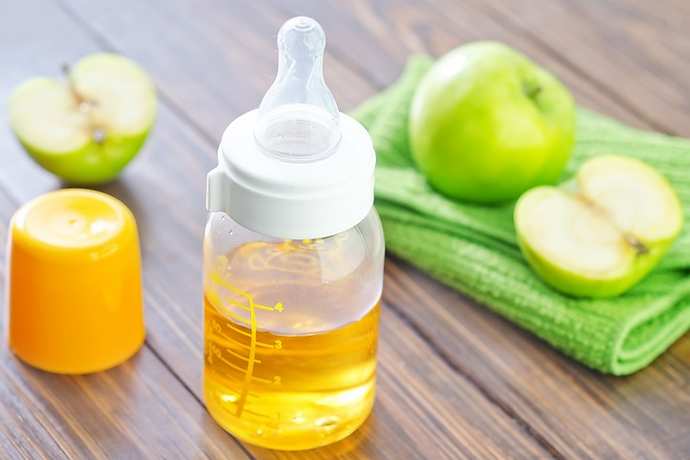
You need to start with carrot, apple or pumpkin. You should first dilute them with water. Give your child a drop for the first time. Then gradually start increasing to two or more. Afterwards, you can try giving the baby puree.
It is advisable to start the baby with apple juice first and give all types clarified first , since this type has less impact on the occurrence of allergic reactions in the child’s body.
After apple, followed by fairly light clarified products in accordance with the list specified in the paragraph “Norms for fruit and vegetable drinks in accordance with the age of the child.” Also, many people start with carrot juice for babies because it is less acidic than apple juice.
- It is important to pay special attention to the product when purchasing it. It must not contain sugar and must also be age appropriate.
- Storage must be carried out in accordance with the instructions.
- When can you give juice to your baby? It should be given immediately after feeding.
- For the first time, when your child tries the drink, you should not give more than a few drops.
- After your baby drinks the drink for the first time, observe how his body reacts. If you have symptoms such as diarrhea, constipation, or severe regurgitation, you should not continue complementary feeding.
The authoritative opinion of Dr. Komarovsky about which juices a baby’s first acquaintance begins with:
Which ones are better to choose for a baby?
There are various types: store-bought and freshly squeezed. Parents decide which ones are best to give to the baby. They differ from each other not only in their appearance and taste, but also in the presence of useful substances in them.
Store
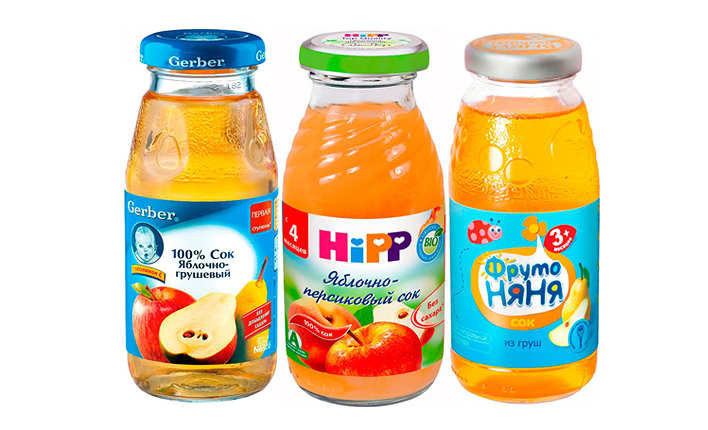
A product is produced that is designed specifically for children, as evidenced by the inscription on the packaging. Also, the age for starting complementary feeding with juice is indicated there. Many people consider store-bought drinks to be very harmful for children, but if you choose a specialized one, it will not have a negative effect on the baby’s body.
Homemade
Products prepared at home should also be treated with great care. Fresh juices have a fairly strong concentration. In an undiluted state, this type will cause more harm to the baby’s body than store-bought sugar containing sugar.
When consuming a freshly squeezed product, it is worth diluting it with water. You should not introduce such fresh juices into the diet until your child is at least one year old.
Allowed fruits and berries for cooking
If you decide to make a drink with your own hands at home, then you should not choose exotic fruits , berries and vegetables on the store shelf - give preference to those growing in the nearby area where your child was born and is growing up. All fruits and berries are allowed for cooking, but you should be more careful about citrus fruits, sour berries, and potential allergens.
Sequence of introduction into the diet
We have already figured out the varieties of berries and fruits that can be used in complementary foods. Now let’s look at the main varieties that you can make yourself or purchase ready-made.
| Lightened | They contain the lowest concentration of acidity, which is why they come first when introducing them into the baby’s diet. Also, specialized children's drinks do not contain sugar. But in terms of their characteristics they are still inferior to products with pulp. |
| With pulp | This type of product contains fiber, which has a beneficial effect on the functioning of the gastrointestinal tract. Drinks with pulp can be introduced only if the clarified ones were taken well by the baby and no harmful consequences arose. |
| Vegetables | They can also become the first complementary food for the baby, since from the experience of parents we can say that he can refuse vegetable drinks after he tries the sweeter fruit drink. |
From what months should you give your baby juice?
Previously, it was believed that juice could be given to a baby from two months of age, but today it is reliably known that this should not be done until the age of four months. A child under three to four months of age still has a very fragile digestive system and an underdeveloped enzymatic system. It is very difficult for his stomach to cope with such an innovation. And in cases where mothers still decide to give juice, even apple juice, before four months, they risk seeing their child suffer from bloating, upset or rash.
However, the ideal time to introduce juices into your baby’s diet is when the little one has already tried at least some fruit purees. His body had already become familiar with this group of foods and was able to adapt. This will reduce the risk of developing allergies.
So, the optimal time for introducing juices is when your little one is seven months old.
I unknowingly gave my son clarified apple juice at 6 months. At that time, we only tried vegetable puree. The baby developed a rash. I was very scared then. The doctor explained the reason. And the second time I introduced juices after 7 months, and even then they were the most harmless ones.
Norms of fruit and vegetable juices according to age
An individual approach to each child is important. Many children should not be given juices for the first time before six months. Some people should try the drink for the first time in a year.
For all cases, you should start with an apple or carrot clarified product . If your baby has minor problems with digestion, then you shouldn’t try it yet.
There is the following list of when to introduce juices while breastfeeding.
- From 3-4 months clarified apple.
- From the age of 4-5 months, clarified fruit: pear, apricot, peach, banana; vegetable: pumpkins, carrots.
- At the age of 6-12 months, drinks from the following berries and vegetables: cherries, cranberries, sweet cherries, black currants, plums, beets, cabbage. You can also try these combinations: apple and apricot, peach or pumpkin, orange and carrot.
- It is advisable, after the child reaches the age of one year, to introduce into his diet the foods that most often cause allergies: citrus fruits, tomatoes.
- For artificial feeding, the drink is introduced 2-3 months earlier.
Homemade recipes by age
When preparing a drink for infants, you should be more attentive and careful, since the baby’s body is not yet fully formed and is more susceptible to the negative effects of the same products than an adult.
Apple
You will need a green apple that does not have any external defects such as spots or dents. Rinse the fruit under running water. Peel, cut out the tail and core. Squeeze the juice by diluting it in a 1 to 1 ratio with water. Start giving your baby in small quantities and no earlier than 5 months.
Carrot
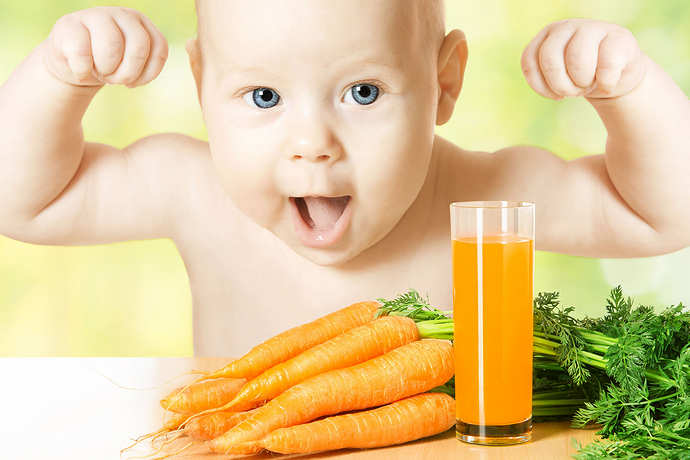
Peel the vegetable by rinsing under running water. Discard the bottom, tops and core. Leave in water for 2-3 hours. Squeeze the juice out of the soaked carrots. Just like with apples, start complementary feeding with carrots no earlier than 4-5 months.
From pear
The first among complementary feeding products is also pear juice for babies. Wash ripe, blemish-free, soft fruit under running water. Remove the unnecessary tail and core of the pear. Squeeze the fruit, diluting it with water in the same ratio as apple.
Carrot juice for a runny nose
Carrot juice is a safe remedy for a runny nose, rich in phytoncides, which, when released onto the nasal mucosa, fight germs.
In addition, the juice does not irritate the mucous membranes, does not burn or cause allergies, therefore it is a natural and safe method of treating runny nose in newborns.
Action: when instilled into the nose, the juice fights infection, relieves swelling and thins mucus. It is used for rhinitis, sinusitis and other diseases that are accompanied by nasal discharge.
Before instilling the nose, the following manipulations are performed:
- First we clean the nasal passages. To do this, we use boiled water heated to room temperature. The water is slightly salted, which will reduce the swelling of the mucous membrane and the child will breathe much easier;
- When washing, a pipette is used. A full pipette of saline solution is injected while the child lies horizontally. The head should not be thrown back. If you deviate from the correct position, the solution may enter the sinuses, causing unpleasant sensations;
- After the solution has been administered, the baby's nostrils are massaged with gentle and gentle movements. Next, using an aspirator, the secretions are sucked out of the nose. You can also use a small pear for this purpose.
A healthy and effective way is to use carrot juice made from fresh carrots. Residues cannot be reused; only freshly squeezed concentrate is used.
For children under one year of age, it is recommended to dilute carrot juice with water in a 1:1 ratio, which will reduce the risk of allergic reactions and have a beneficial effect on the mucous membrane. Instillation should be done 2-3 times a day, every 2-3 hours, no more than 1-2 drops in each nostril.
If you have difficulties with instillation, you can use a cotton ball, moisten it with carrot juice and insert it into the spout. These manipulations should be carried out with extreme caution so that the child does not get injured. The baby's nose is very small, so the cotton pad does not need to be inserted too far.
conclusions
If you decide to start introducing juice into your baby’s diet and summing up the information given in the article, we will highlight 3 main points that must be followed:
- Before introducing complementary foods, you should consult with your local pediatrician, who will tell you about the best options for your child and how to behave if an allergic reaction is detected.
- It is strictly forbidden to give such complementary foods if the baby has just suffered any illness or has had a routine vaccination.
- The baby will be more interested in complementary feeding if you give it from bright and beautiful baby dishes - spoons and bottles.
In addition, you can learn more about the timing of the first complementary feeding for a child, as well as where to start, from the video:
Early introduction of juices - benefit or harm
In Soviet times, pediatricians strongly recommended introducing natural juices into a baby’s diet from the age of 2 months. And for those who were bottle-fed, generally from one. However, then young mothers were preparing juices on their own. Popular ingredients were apples or carrots.
Now the opinion of leading pediatricians regarding the early introduction of juice into a child’s diet has changed. It turned out that this drink contains acid, the effect of which on the infant’s fragile digestive system, in the future, leads to gastrointestinal diseases. Another negative point is possible allergic reactions.
Of course, drinking freshly squeezed drinks has a beneficial effect on the body. When drinking juice daily:
- Metabolism is normalized.
- The immune system is strengthened.
- The drink saturates the body with essential vitamins and microelements.
- Water balance is restored.
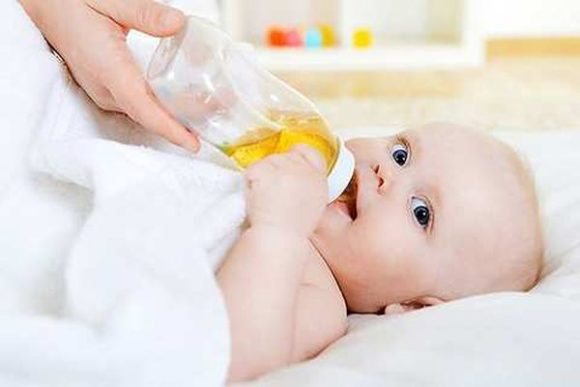
And yet, when can you start giving juice to your baby?
